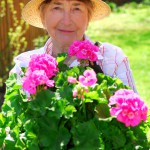As summers grow hotter due to climate change, cooling strategies in senior living design are becoming a top priority. For elderly residents, who are more vulnerable to heat-related illness, thoughtful design can go beyond comfort—it can be lifesaving. In this article, we explore how modern retirement residences are using green roofs, shaded gardens, and natural landscaping to reduce heat exposure, promote well-being, and create safer living environments for seniors—particularly in regions like Ontario.
 Why Seniors Need Protection from Heat
Why Seniors Need Protection from HeatOlder adults are less able to regulate body temperature, sweat less efficiently, and often have chronic health conditions or medications that increase sensitivity to heat. That’s why passive cooling strategies—built directly into the design of retirement homes—are critical in preventing:
Dehydration
Heat exhaustion or heatstroke
Sleep disruption
Cardiovascular strain
Mood and cognitive decline
Ask questions regarding retirement homes to our experts
Passive cooling refers to design choices that naturally reduce indoor and outdoor temperatures without relying entirely on air conditioning. In retirement settings, this can include:
Green roofs that insulate buildings and reduce solar heat gain
Shaded walking paths and gardens for safe outdoor activity
Strategic landscaping that promotes airflow and natural shade
Building orientation and materials that limit heat absorption
These features reduce operating costs, minimize energy use, and increase residents' access to safe, enjoyable environments.
| Cooling Feature | Description | Benefit for Seniors |
|---|---|---|
| Green Roofs | Vegetated roof surfaces that absorb heat and insulate the building | Lowers indoor temperatures and reduces energy use for cooling |
| Shaded Garden Areas | Tree-lined courtyards, pergolas, and canopies in outdoor spaces | Allows safe outdoor time even during hot weather |
| Reflective Roofing Materials | White or reflective surfaces that deflect solar radiation | Prevents roof surfaces from overheating the interior |
| Cross-Ventilation Design | Window and corridor placement to promote airflow | Improves air circulation and reduces heat buildup |
| Native Landscaping | Drought-resistant plants that require minimal watering | Improves aesthetics while supporting eco-friendly cooling |
In Ontario, some retirement home developers are already incorporating green infrastructure to meet climate resilience goals. These include:
LEED-certified senior residences with energy-efficient roof systems
Retirement villages with therapeutic gardens and shaded courtyards
Urban senior housing using rooftop gardens as cooling zones and social spaces
The combination of aesthetics, comfort, and climate protection makes these strategies increasingly attractive.
If you’re touring or comparing retirement homes in Ontario, consider asking:
Does the residence include outdoor spaces with shade and seating?
Is the building designed with green roofs or reflective roofing?
Are natural ventilation and cooling part of the design?
How are outdoor areas used during heat advisories?
Are gardens accessible for residents with mobility aids?
These questions can help you choose a residence that’s truly built for long-term comfort and safety.
A green roof is a layer of vegetation planted on top of a building. It absorbs heat, reduces roof temperature, and helps insulate the interior, making living areas cooler and more comfortable.
Yes—when combined with hydration stations and staff supervision. Many homes restrict outdoor access only during peak heat hours and use shade structures to ensure safety.
Absolutely. Natural cooling strategies can significantly reduce air conditioning use, lowering operating costs that may be passed down to residents.
Yes. Many retirement homes include therapeutic gardening areas where residents can safely participate in planting and maintenance.
Not yet. While more homes are incorporating sustainable cooling strategies, it varies by facility. Families should ask directly when touring locations.
Don't hesitate to contact us at 343 309 5289 . We can help you choose the right establishment for you and assist you in your search.

Find a suitable senior residence